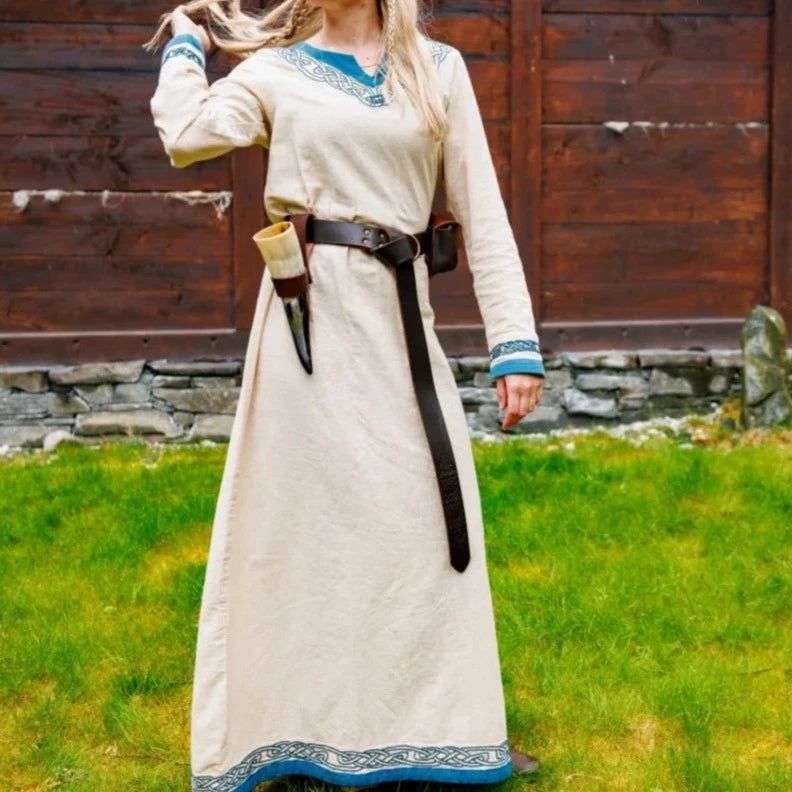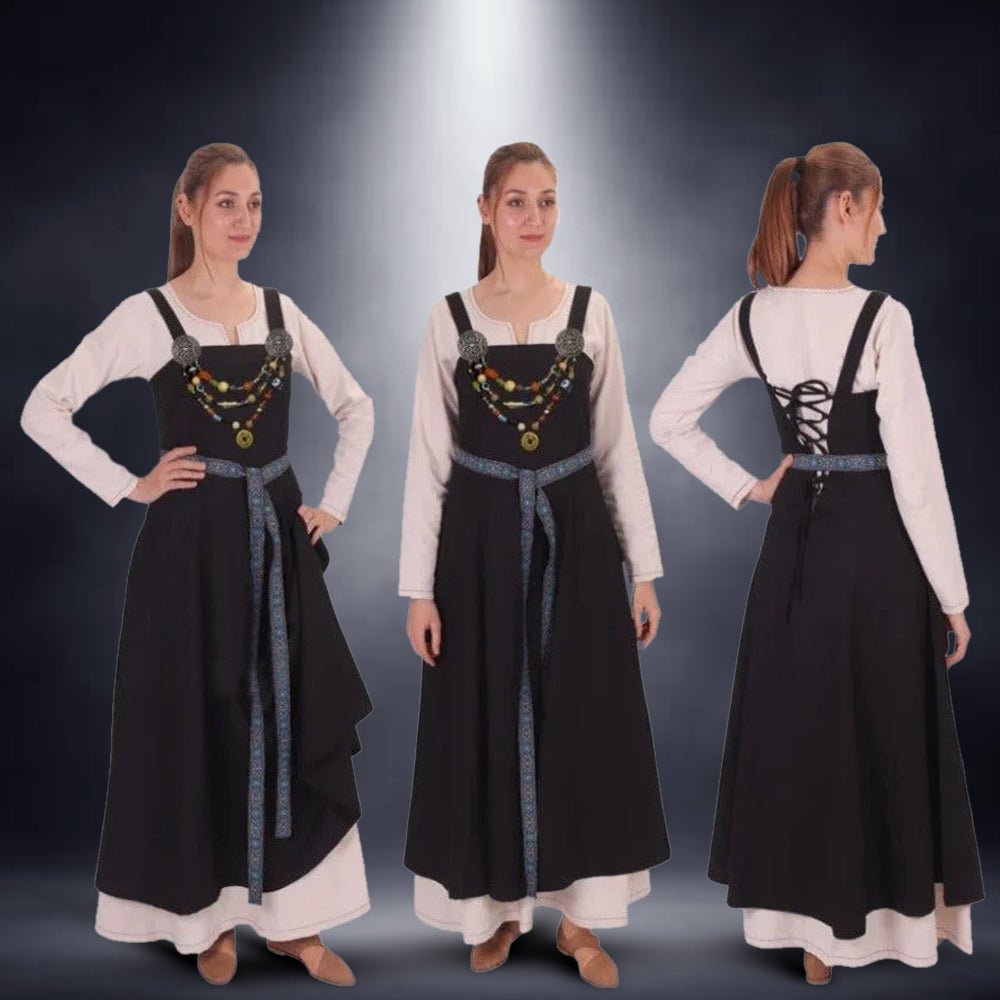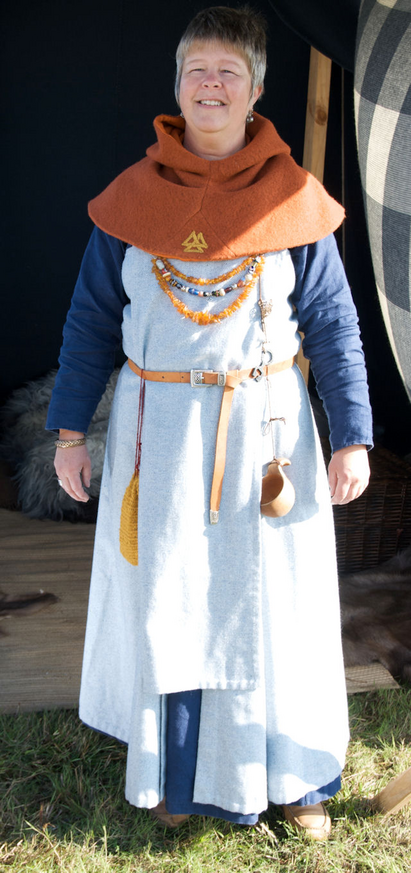A Deep Dive into Viking Women’s Clothing and Style
Viking women were known for their unique and intricate Clothing, which reflected their status and societal roles. This article will explore the various aspects of Viking women’s attire, from the materials used to the intricate designs that adorned their garments.

The clothing of Viking women was primarily made from natural materials such as wool, linen, and silk. Wool was the most common fabric, as it was warm and durable, perfect for the harsh Scandinavian climate. Linen was used for lighter garments, while silk was a luxury item, often reserved for the upper class.

Viking women’s clothing typically consisted of a simple, long-sleeved tunic that reached the floor. This tunic was often adorned with intricate embroidery or woven patterns. Over this, women would wear an apron dress, which was a shorter, sleeveless garment that covered the front of the tunic and fastened at the shoulders.

Accessories played a significant role in Viking women’s attire. Brooches, pins, and beads were used to secure garments and add decorative flair. Jewelry was often made from materials such as bronze, silver, and gold, and featured designs inspired by nature, mythology, and the Viking’s love for intricate patterns.

In conclusion, Viking women’s clothing was a reflection of their culture, status, and the natural resources available to them. From the materials used to the intricate designs that adorned their garments, Viking women’s attire was both practical and visually stunning.







